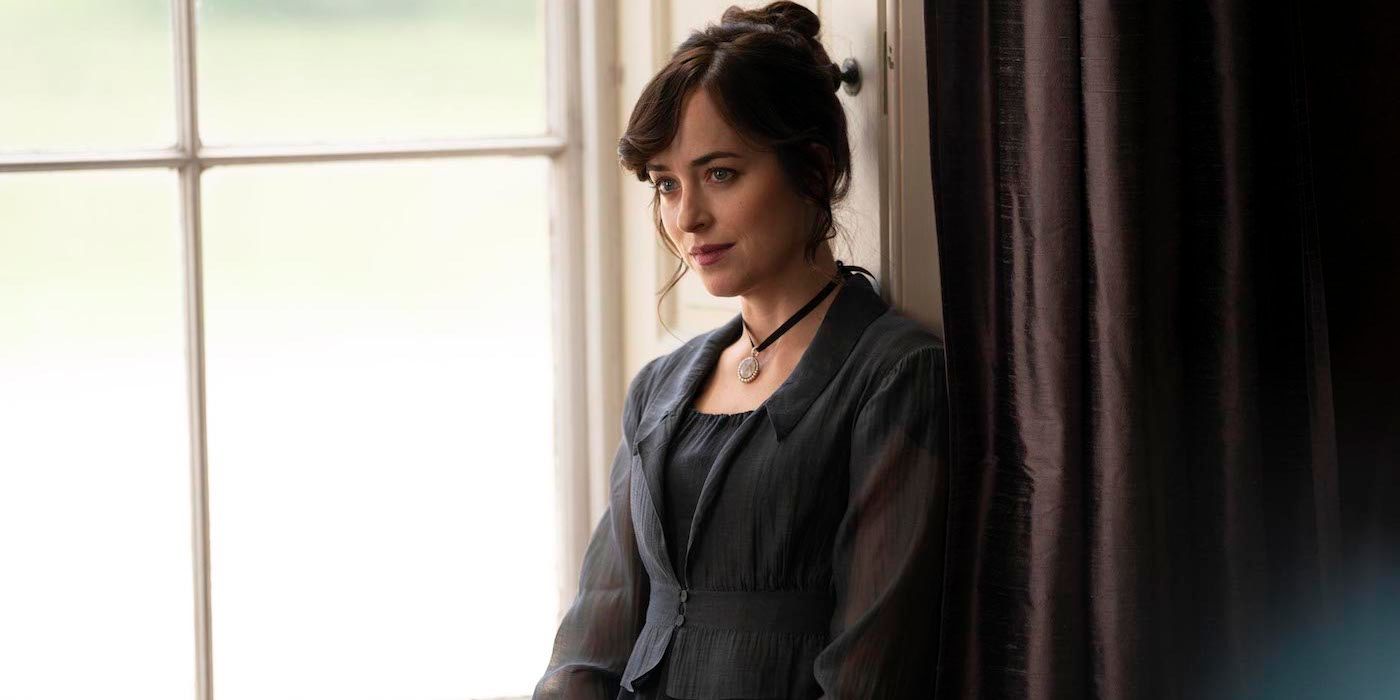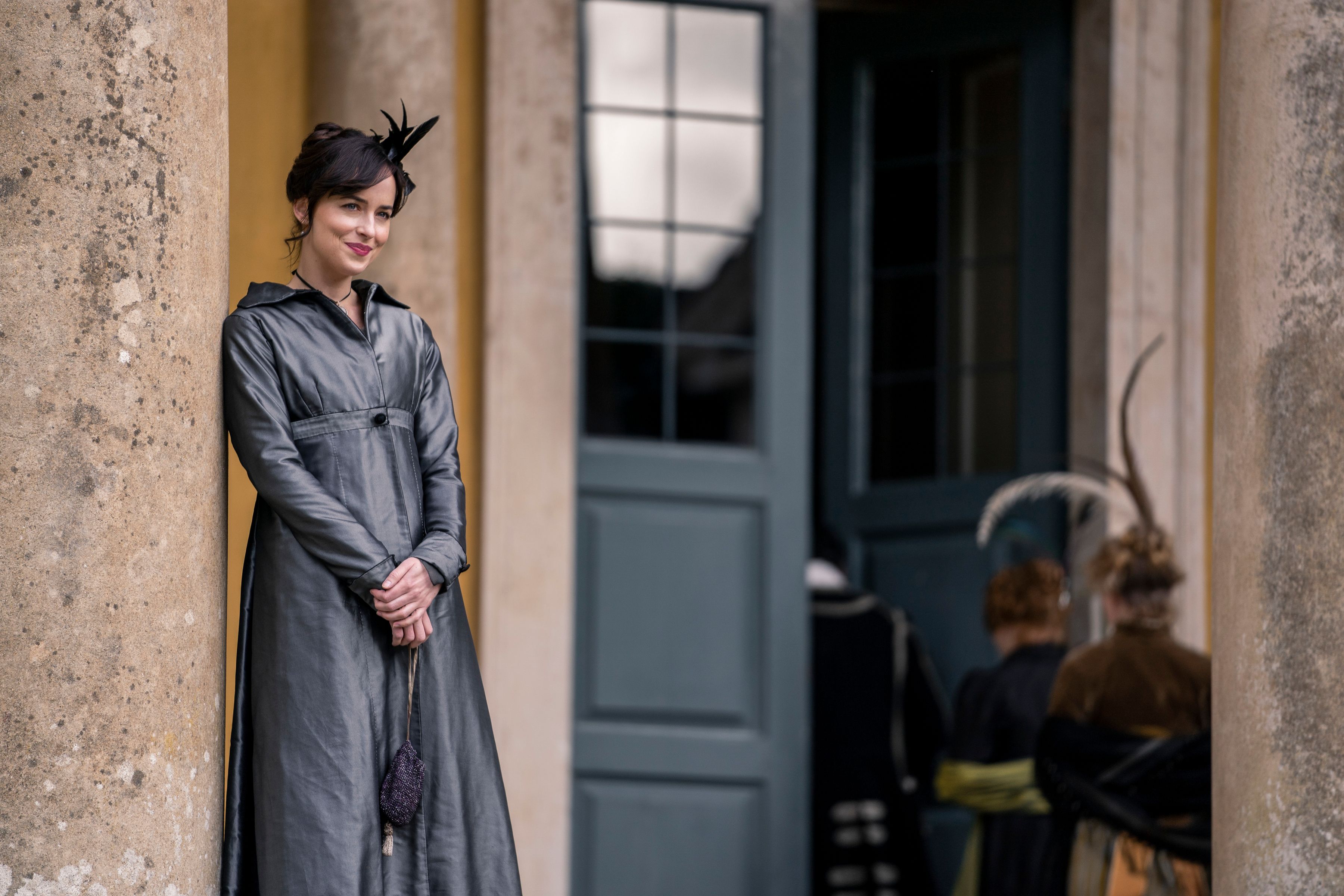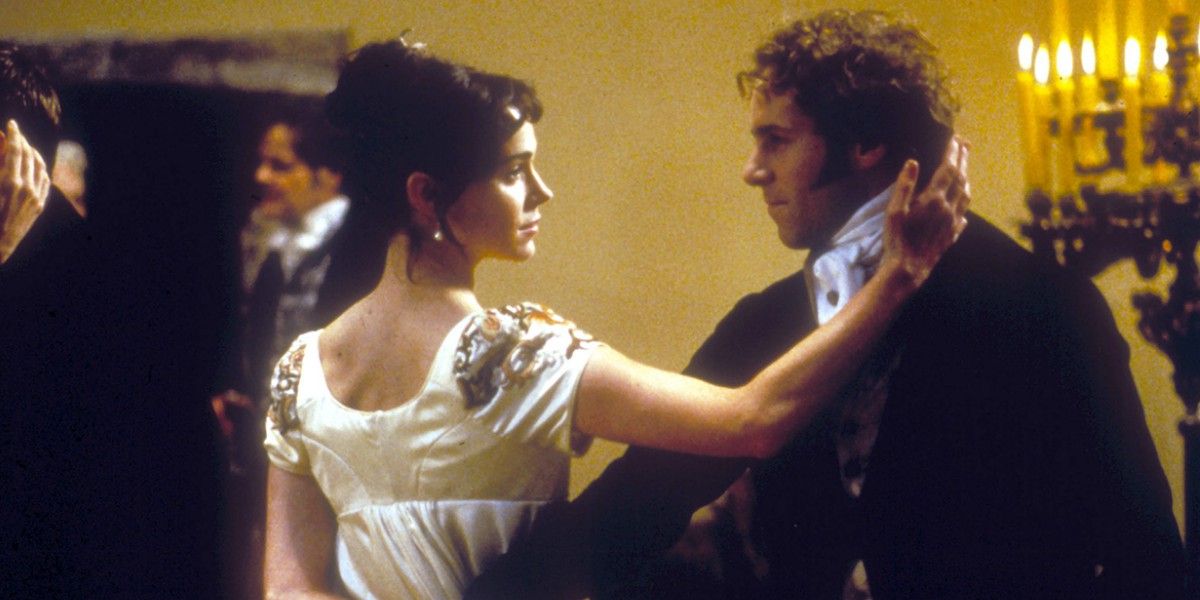Netflix has released the official trailer for their film adaptation of the beloved Jane Austen novel Persuasion with Dakota Johnson as Anne Elliot, the middle daughter of a once wealthy nobleman who reunites with her previous fiancé, Captain Wentworth (Cosmo Jarvis). Though they’ve been separated for years, Anne sees his return to her life as a painful reminder of what she lost and a potential second chance at rekindling what they once had. The romantic period drama also stars Henry Golding as Mr. Elliot and Richard E. Grant as Anne’s father.
A unique characteristic about the trailer (and presumably the film) is its use of the fourth wall break. Anne is seen cheekily addressing the audience, making eye contact after comments from her family members, and even owning her own clumsiness after spilling jam on herself. This is a departure from previous versions of Persuasion, which typically opt to tell the romance between Anne and Wentworth straightforwardly. While some fans of the story would argue this takes away from the beauty of the narrative, breaking the fourth wall here is a fresh take that adds a different type of depth to the beloved world of Jane Austen.
Breaking the fourth has been a trope in cinema since the silent film era, as early as 1903 in The Great Train Robbery. Before that, William Shakespeare was a master at giving his characters soliloquies and monologues as a device to inform theatergoers what his characters were thinking and feeling. It has gained new popularity for modern audiences in recent years, from hit series like Fleabag to comic book movies like Deadpool; in fact, Wanda Maximoff (Elizabeth Olsen) stares directly at the audience, breaking the fourth wall as she attempts to reunite with her sons in Doctor Strange in the Multiverse of Madness.
With just a word or a look, those who break the fourth wall in film and television can add texture or tension to any given scene. Breaking the fourth wall serves a variety of functions, primarily to reveal any given character’s thoughts and feelings about events taking place and people around them. It also serves to communicate exposition, irony, and even its own humor. This trope is not a new concept, and though its roots are found in the theater, it’s not typically found in period dramas. However, breaking the fourth wall can give period dramas, like in the case of Persuasion, the opportunity to enhance the world and the characters within it.
The story of Persuasion is told from a third-person point of view, with an emphasis on Anne’s perspective. At a younger age, she fell in love, and due to other people’s opinions (and persuasions), she ended her engagement with the man she loves. In the book, her angst, once he returns to her life, isn’t expressed through dialogue. By adding a fourth wall break to the Netflix adaptation of Persuasion, audiences get the opportunity to hear directly from Anne with regard to the regret and longing she feels. It adds an extra layer of insight into Anne’s psyche that the rest of the world isn’t privy to.
Outside the romance aspects of the novel, Persuasion offers insight into Anne’s family dynamics as well as life inside Regency society at the time. Details about her family and their relationships with each other, money, and status build upon each other, enriching the world-building. Typically, these factors get lost in the transition from page to screen. Anne addressing the audience can be a point of entry for those unfamiliar with the Regency world, as well as fill in the gaps about her family and their relations.
Breaking the fourth wall creates its own type of comedy within the narrative. Persuasion is not as known for its comedy, yet it appears that this adaptation is going to lean more into the humor than its predecessors. Throughout the trailer, Dakota Johnson’s Anne smirks at the audience. This has the potential to bring levity in order to balance out the more dramatic moments, especially in regard to her family members. Anne is seen as the sensible middle child of her siblings; breaking the fourth wall further demonstrates how different she is from her family and how she chooses to share personal information with them. In addition to this, allowing Anne to have her own outlet with the audience provides her the opportunity to give them a glimpse of her true self and interiority — the one still hopelessly in love with Wentworth.
This is not the first time an Austen adaptation has utilized the fourth wall break to offer further insight and character perspective. The 1999 film Mansfield Park has its protagonist, Fanny Price, played by Frances O’Connor, address the audience throughout the movie. In Mansfield Park, Fanny goes to live with her rich relatives as a young girl. Save for Edmund Bertram (Jonny Lee Miller), her relatives aren’t forthcoming nor favorable towards her, so through Fanny’s monologues, audiences learn more about the family dynamics. Plus, through this device, Fanny’s wit and real personality shine brightest. It endears audiences to her as she navigates through her feelings for Edmund and the disruptive arrival of Henry Crawford (Alessandro Nivola) and his sister, Mary (Embeth Davidtz). After Edmund proposes to her, Fanny looks at the audience one more time; it’s extremely satisfying for viewers to celebrate alongside Fanny when she does get her happy ending, and in this case, it’s accomplished through breaking the fourth wall.
Persuasion was Austen’s last completed novel. So far, it has only been adapted within the television space as a TV film or a miniseries, and it’s been years since there has been a new version. This added feature of breaking the fourth wall gives this adaptation of Persuasion the chance to stand out from the other Austen-inspired movies and series, as well as tell the story in a distinct way for modern audiences.




